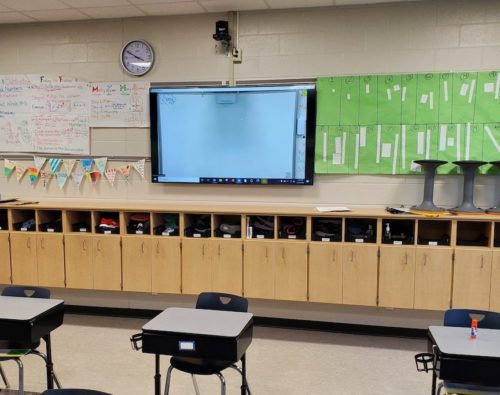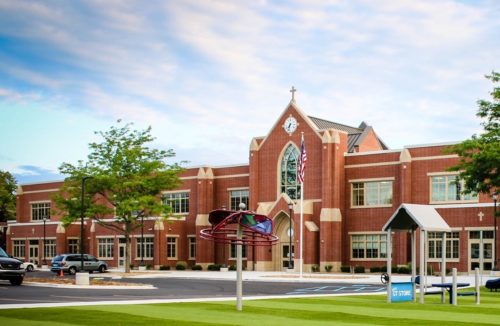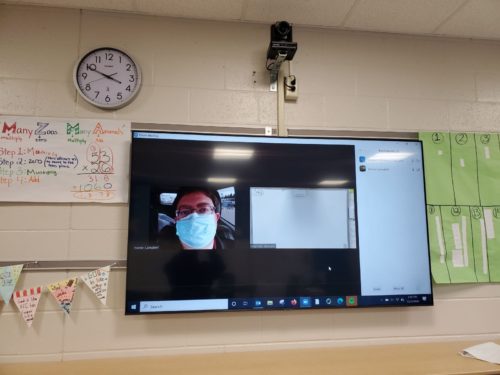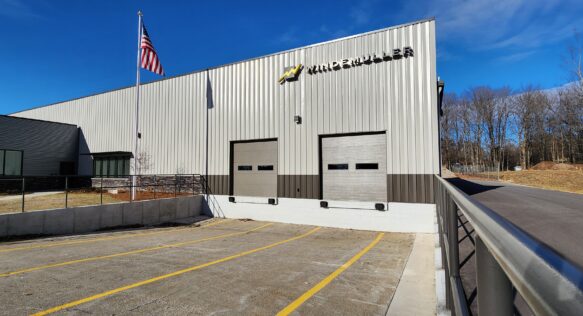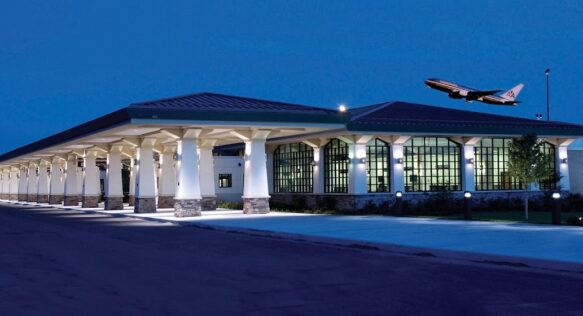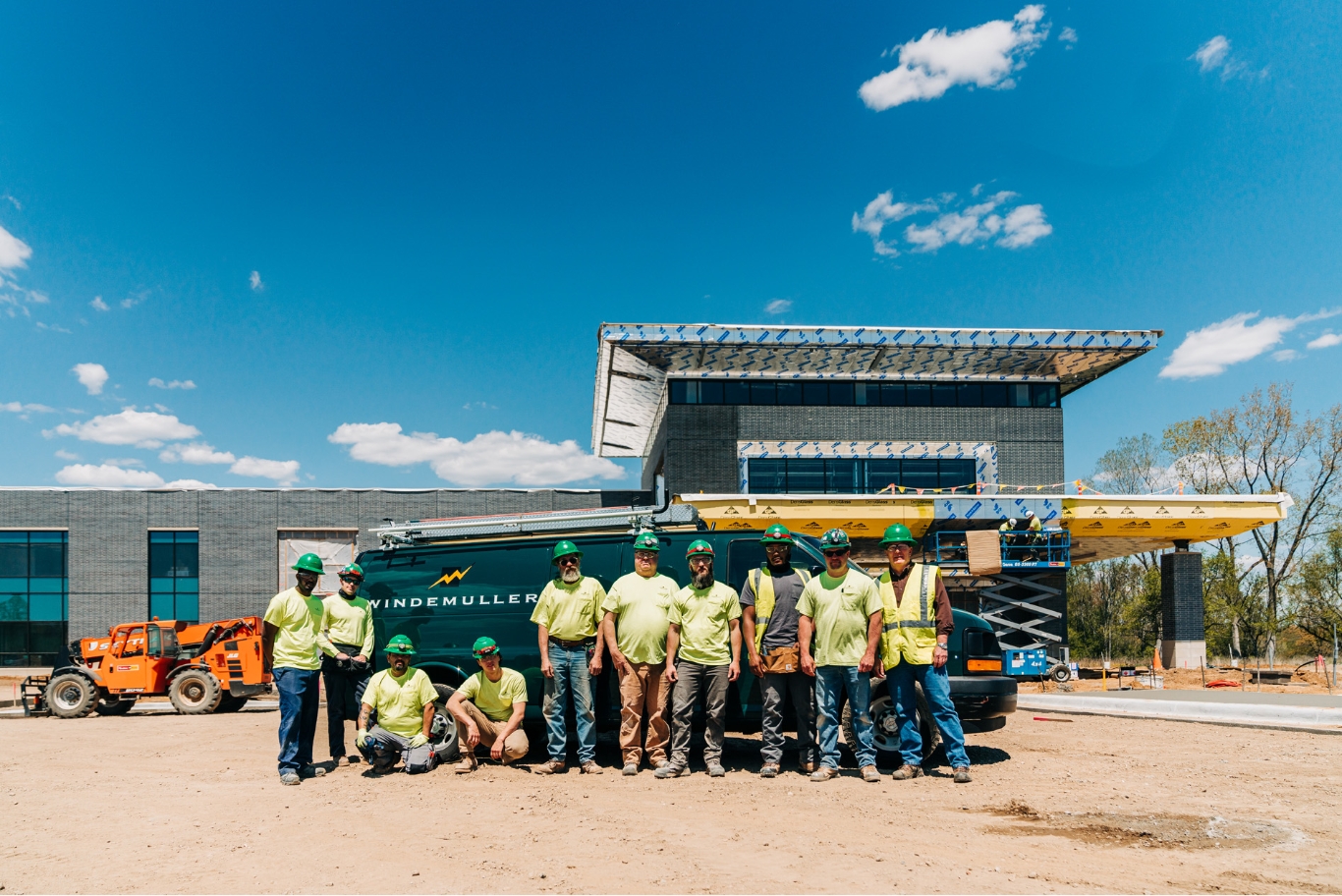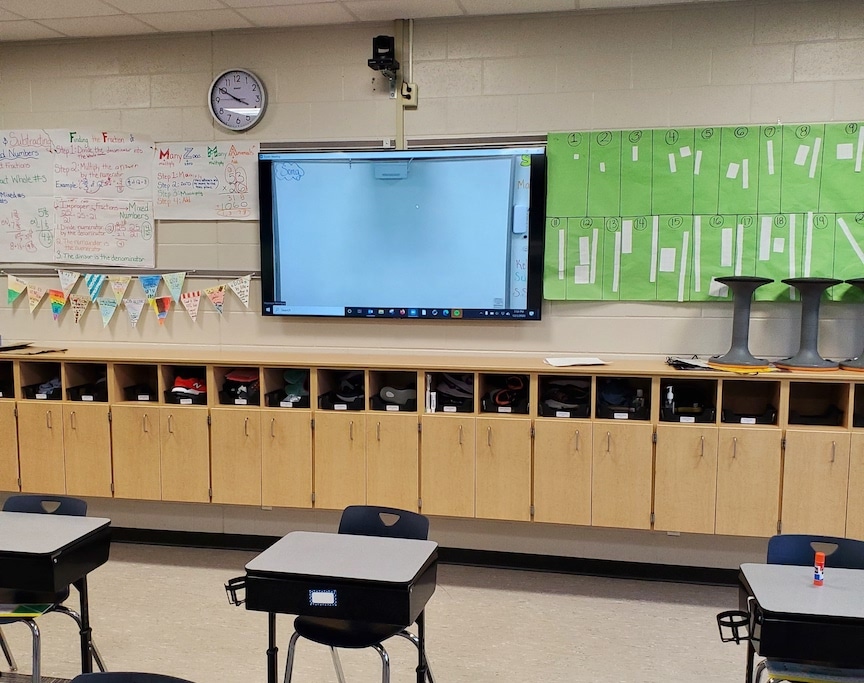
Helping Schools Stay Connected
The COVID-19 pandemic has forced schools across the country and around the world to modify their instruction in a way that minimizes viral exposure risk to students and staff alike. In many cases, that has meant embracing virtual or distance learning. Windemuller recently worked with a local school district to develop and install distance learning systems that enable instructors to deliver a superior learning experience regardless of whether students are in the classroom or at home.
Blended Learning
K-12 students in Michigan have spent a significant portion of 2020 learning from home instead of inside classrooms. By executive order, schools throughout the state were prohibited from operating on an in-person basis throughout the spring. Heading into the fall semester, with schools permitted to open once more, Grand Traverse Area Catholic Schools (GTACS), a private school district in Traverse City, wanted to make sure it was ready for the possibility of additional closures. At the same time, GTACS wanted a system that would allow for a seamless “blended classroom” approach, with some students learning in the classroom and others tuning in for lessons from home via video chat platforms like Zoom.
Working closely with GTACS, Windemuller designed systems for 30 GTACS rooms (so far) that make it possible for teachers to deliver lesson plans in a more dynamic manner than ever before.
Virtual Classrooms
“Grand Traverse Area Catholic Schools engaged Windemuller to remodel 30 K-12 classrooms with virtual distance learning equipment,” says Eric Mulvaney, the district’s director of school operations. “Each install included a 75-inch flat screen TV, a 360-degree rotating camera, and a short throw interactive projector with Apple TV. A wired USB hub allows any laptop to hook up to the system. These virtual classrooms enable our teachers to provide instruction to students who are at home at a level that closely resembles face-to-face in-classroom learning. The system can also be used for teacher observations and assessments. Windemuller’s assistance with our project allows us to quickly adapt to school closures, student quarantines, or families who, for safety reasons, desire a virtual learning for their students.”
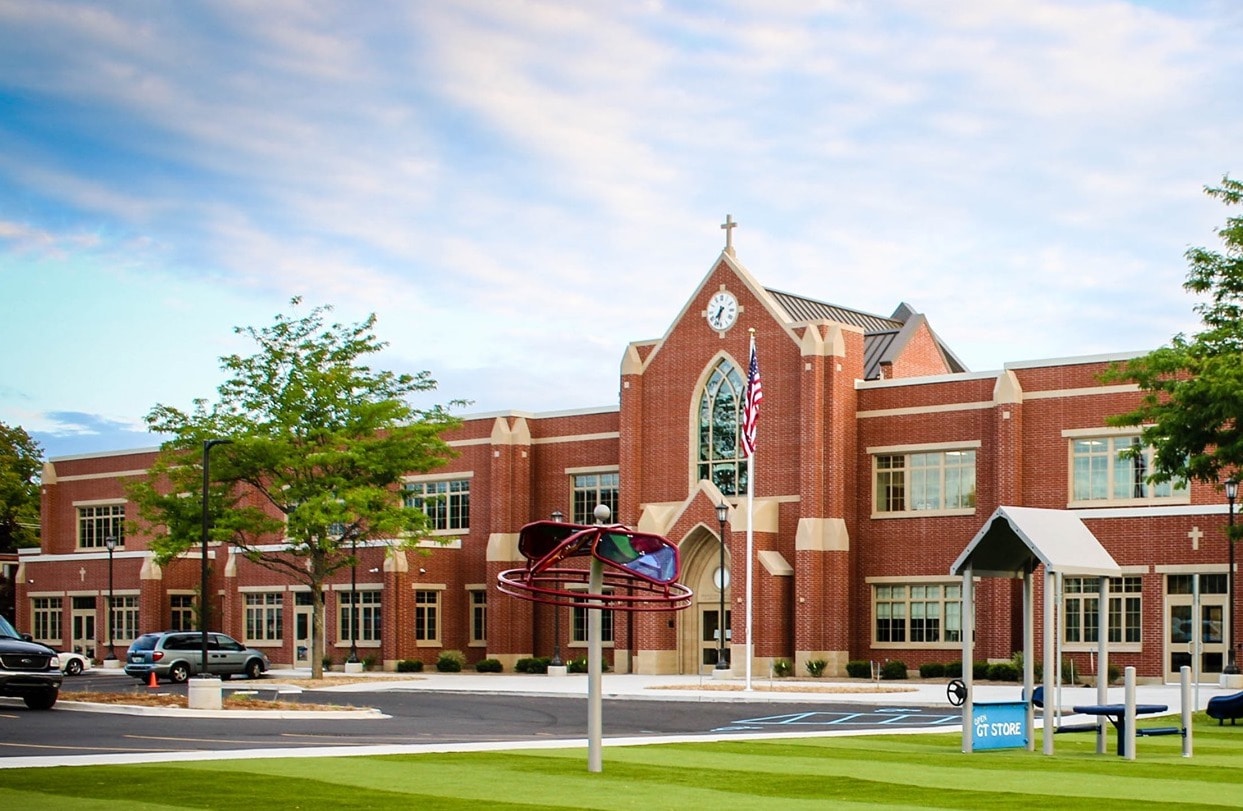
The Challenge
The biggest challenge with this project was the compressed timeline. GTACS chose to move forward with the new systems just a few weeks ahead of when in-person schooling was set to resume. The district had 15 rooms throughout its three schools that it had identified as high-priority, and Windemuller’s job was to get those rooms set up for distance learning as quickly as possible. That need for speed meant shuffling our crew throughout the district, both in the weeks leading up to school and after school resumed. With COVID-19 protocols being what they are, and with classrooms monopolized during the day, we could only start work after 3pm.
The other major challenge was the way the classrooms varied – not just from one school building to the next, but also sometimes within the same building. The rooms had different shapes, sizes, and layouts, as well as different construction. Some had block walls, while others had wood walls or drywall. These differences meant Windemuller couldn’t go into every room with the same plan of attack, but instead had to modify the design slightly with every room.
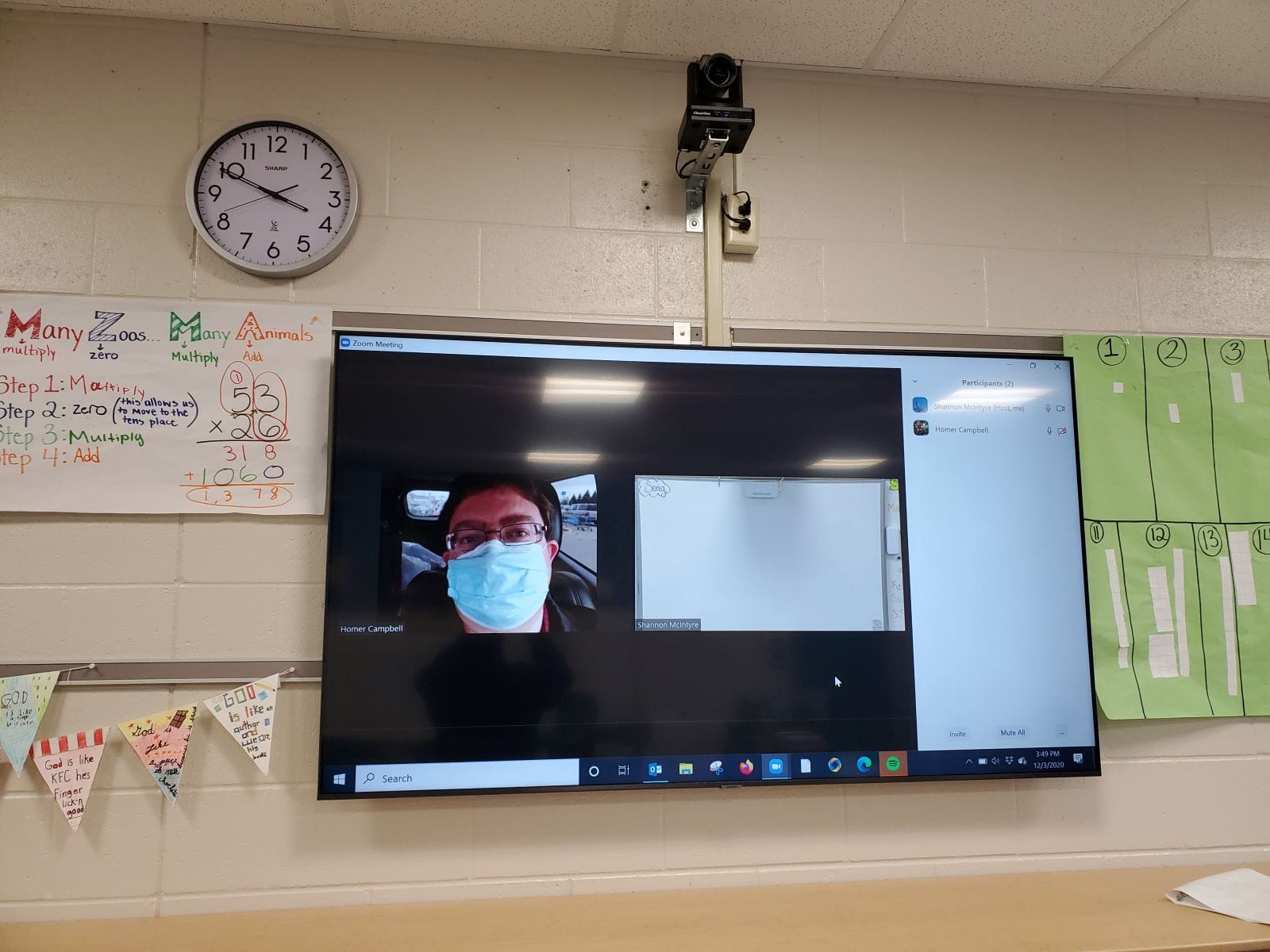
The Solution
To make up for missed hours in the morning and during the day, our crews would often work from 3pm to 11pm or 12am to make sure we were making enough progress every day. We also made sure we had a big-picture plan in place from the start, to guarantee that we were allocating our resources smartly and making equal progress across the elementary school, the middle school, and the high school.
In terms of variation in room design and layout, our crews stayed flexible throughout the project and learned to modify our designs and overall approach to suit each specific room. Everything from where we were positioning cameras to how we were mounting screens on the different types of walls changed from one room to the next, but staying fluid and knowing we had the right technology in hand no matter what helped us deliver top-tier distance learning solutions regardless of the variables.
Sometimes, that flexibility even meant being ready to add another step or two to the process. While some rooms were fully wired, other classrooms were not set up with electricity or outlets everywhere that we needed them. In those cases, we leveraged electricians out of Windemuller’s electrical group to bring power to the front or back of classrooms. Not every IT group or communications company that is getting into the distance learning game would be able to offer those services in-house, without subcontracting. Our capabilities in IT, communications, and electrical work—all under the same roof—proved to be our biggest differentiator on this job.
With the installations in place, we worked with Director of Operations Eric Mulvaney to deliver basic administrative training on how to use the systems we had installed. Every piece of technology, from the PTZ (pan tilt zoom) cameras to the lapel microphones that allow teachers to be heard crisply and cleanly, has been configured and integrated to work in harmony in a user-friendly, platform-agnostic fashion. Our systems are designed to support Chromebooks, Macs, and PCs, as well as to work with Zoom, Google Meet, or any other video chat software that GTACS chooses to utilize in the coming weeks, months, and years.
While the hope, of course, is that COVID-19 will soon subside and students will be able to return to classrooms safely and permanently, distance learning solutions like the ones we delivered for GTACS will enable schools to stay flexible and prepared no matter what the future holds.
